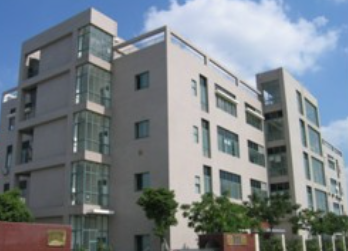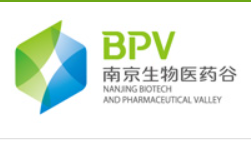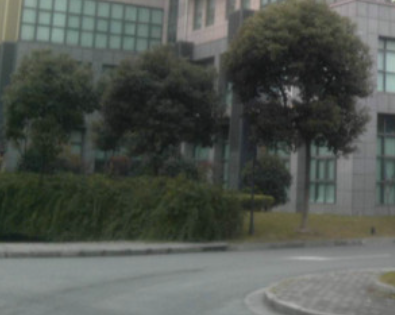游离氨基在用NaOH 或NaHCO3 控制的碱性条件下用二氧六环和水的混合溶剂中很容易同Boc2O反应得到N-叔丁氧羰基氨基化合物。这是引入Boc常用方法之一,它的优点是其副产物无多大干扰并容易除去。有时对一些亲核性较大的胺,一般可在甲醇中和Boc酸酐直接反应即可,无须其他的碱,其处理也方便。
对水较为敏感的氨基衍生物,采用Boc2O/TEA/MeOHor DMF 在40-50℃下进行较好,因为这些无水条件下用于保护O17标记的氨基酸而不会由于与水交换使O17丢失。有空间位阻的氨基酸而言,用Boc2O/Me4NOH.5H2O/CH3CN是十分有利的。
芳香胺由于其亲核性较弱,一般反应需要加入催化剂,另外对于伯胺,通过DMAP的使用可以上两个Boc.

对于有酚羟基存在的胺,酚羟基上接Boc的速度也是相当快的,因而一般没太大的选择性。对于有醇羟基存在的,若用DMAP做催化剂,时间长了以后醇羟基也能上Boc,因此反应尽量不要过夜。
由于氰酸酯的生成,有位阻的胺往往会与Boc2O生成脲。这个问题可通过该胺NaH或NaHMDS反应,然后再与Boc2O反应来加以避免。

有时在反应中有可能多加了Boc酸酐,当分子中无游离酸碱时很难出去,若一定要除去,一般在体系中加入一些N,N-二甲基乙二胺或N,N-二甲基丙二胺,而后将上了Boc的N,N-二甲基乙二胺或N,N-二甲基丙二胺用稀酸除去。

由于Boc对酸敏感,因此在合成过程中用到酸洗或酸溶解等操作时,为了保险起见,尽量不用盐酸,而用10%柠檬酸(0.5M)或在低温条件进行。
反应实例
一、氨基酸Boc保护示例

Oskar Keller,Walter E. Keller, Gert van Look et al., Org. Syn., 63, 160
A 4-L, four-necked, round-bottomed flask, equipped with anefficient stirrer, a droppingfunnel, reflux condenser, and thermometer is charged with a solution of 44 g (1.1 mol) of sodium hydroxidein 1.1 L of water. Stirring isinitiated and 165.2 g (1 mol) of L-phenylalanine is added at ambienttemperature, and then diluted with 750 mL of tert-butyl alcohol. To the well-stirred, clearsolution is added dropwise within 1 hr, 223 g(1 mol) of di-tert-butyl dicarbonate.A white precipitate appears during addition of the di-tert-butyldicarbonate. After a short induction period, the temperature rises toabout 30–35°C. Thereaction is brought to completion by further stirring overnight at roomtemperature. At this time, the clear solution will have reached a pH of7.5–8.5. The reaction mixture is extracted two times with 250mL of pentane, and the organic phase isextracted three times with 100 mL of saturated aqueous sodium bicarbonate solution. The combined aqueous layersare acidified to pH 1–1.5 by careful addition of a solution of 224 g (1.65 mol) of potassium hydrogensulfate in 1.5 L ofwater. The acidification is accompanied by copious evolution of carbon dioxide. The turbid reaction mixture is thenextracted with four 400-mL portions of ethyl ether. The combined organic layers are washed twotimes with 200 mL of water, dried over anhydrous sodiumsulfate or magnesium sulfate, and filtered.The solvent is removed under reduced pressure using a rotaryevaporator at a bath temperature not exceeding 30°C. The yellowish oil that remains istreated with 150 mL of hexaneand allowed to stand overnight. Within 1 day the following portions of hexane are added with stirring tothe partially crystallized product: 2 × 50 mL, 4 × 100 mL, and 1 × 200 mL.The solution is placed in a refrigeratorovernight; the white precipitate is collected on a Büchnerfunnel and washed with cold pentane. Thesolid is dried under reduced pressure at ambient temperature to constant weightto give a first crop. The mother liquor is evaporated to dryness leaving ayellowish oil, which is treated in the same manner as described above, giving asecond crop. The total yield of pure white N-tert-butoxycarbonyl-L-phenylalanine is 207–230 g(78–87%), mp 86–88°C, [α]D20 + 25.5° (ethanol c 1.0).
二、 Boc酸酐在甲醇中与胺直接反应

Boc2O (262 g, 1.2 mol) in MeOH (250 ml) was added toa soluton of compound 1 (157.2 g,1.0 mol) in MeOH (350 ml) at 10°C,and the resulting mixture was stirred at room temperature for 2 h. N1,N1-dimethylethane-1,2-diamine (26 g, 0.3 mol) was added and the mixture was stirredat room temperature for 15 min. The solvent was removed in vacuo, and theresidue was dissolved with ethyl acetate (750 ml). The combined organics werewashed with 1 N HCl (2 x 250 ml) and brine (2 x 250 ml), dried over sodiumsulfate and filtered. The solvent was removed to give compound 2 (250 g, 96%), which was used directly in thenext step.
三、芳胺的单Boc保护示例

Luo, Qun-Li;Liu, Zhi-Ying et al., J. Med. Chem., 2003, 46(13), 2631-2640
3-Aminopyridine-2-carboxylic acid(5.02 g, 36 mmol) was suspendedin 60 mL of dry DMF, and Et3N (15.2 mL, 108 mmol) was added dropwise at roomtemperature. To the resulting brown solution was added Boc2O (11.80 g, 54 mmol). After being stirred for 10min, the mixture was heated at 40-50 °Covernight. The reaction mixture was poured into water and was then extractedwith EtOAc (2 X 50 mL). The aqueous phase was acidified to pH 4-5 with 2 M aqueous HCl and then extracted with CH2Cl2(3 X 50 mL). The combined organic phases were thenprocessed in the usual way and chromatographed (13:1 CHCl3/MeOH) to yieldthe desired product (4.2 g,49%).
四、 芳胺的双Boc保护示例

Macleod, Calim;Mckieman, Gordon J et al., J. Org. Chem., 2003, 68(2),387-401
A solution of NaHMDS (22.0 mL, 22.0 mmol, 1 M in THF) was added to a solution of the amine (2.11 g, 10.0 mmol) and (Boc)2O (5.46 g, 25.0 mmol) in THF (50 mL) at 0°C under nitrogen. The reaction was allowedto warm to rt and stirred for 16 h. After this time, the reaction was poured intowater, extracted into CH2Cl2(2 X 25 mL),washed with water (2 X 25 mL), dried over Na2SO4, and concentrated to yield a white-yellowsolid. Recrystalization from petroleum ether (40-60 °C) gave the imide as needles (3.21 g, 7.80 mmol, 78%). Rf (hexane/ CH2Cl2 1:9, SiO2): 0.10. Mp:106-109 °C.
五、 酰胺的Boc保护示例

Lars G. J. Hammarström, Yanwen Fu et al., Org. Syn., 81, 213
A 2000-mL, three-necked, round-bottomed flask equippedwith an argon inlet adapter, glass stopper, and an overheadmechanical stirrer is charged with a suspension of the hydantoin 1 (26.0 g,154 mmol) in 1000 mL of 1,2-dimethoxyethane. Triethylamine (15.7 g, 154mmol) is added in one portion, and the resulting white suspension isstirred for 30 min. Di-tert-butyl dicarbonate (168.0 g, 770mmol) is then added by pipette, followed by4-dimethylaminopyridine (DMAP)(0.2 g, 1.5 mmol). Six additional 0.2 g-portionsof DMAP are added at 12 hr intervals during the course of the reaction.The reaction mixture is stirred vigorously for a total of 72 hr, and the resultinglight yellow solid is then collected in a Büchner funnelusing suction filtration. The filtrate is concentrated to a volume of 60 mL byrotary evaporation, and the resulting solution is cooled to 15°C. The precipitate which appears iscollected using suction filtration, added to the first crop, and the combinedsolids are dissolved in 500 mL of chloroform. This solution is washed with three 200-mL portions of 1.0N HCl, and the combinedaqueous phases are extracted with 100 mL of chloroform. The combined organic layers are washed with 100 mL of saturated aq NaHCO3solution and 100 mL of brine,dried over anhydrous MgSO4,filtered, and concentrated by rotary evaporation. The resulting solid is driedat room temperature at 0.01 mmfor 24 hr. The resulting finely ground light yellow solid is suspended in 400 mL of diethyl ether in a 1000-mL, round-bottomed flask equipped with a magnetic stirbar, stirred for 2 hr, and filtered on aBüchner funnel washing with four 50-mL portions of diethyl ether. The product is dried under vacuum (85°C; 0.5 mm) for 24 hr to give 60.0–65.3 g (83-90%)of 2 as a ivory-colored solid.
六、吲哚Boc保护示例

G. Tong; P. Ruiyan et al., J. Org.Chem., 1997, 26, 9298
To a solution of6-methoxy-3-methylindole (5.0 g,31 mmol) in distilled acetonitrile (150 mL) were added di-tertbutyl dicarbonate(7.44 g, 34.1 mmol) andDMAP (0.195 g, 1.6 mmol).The reaction mixture was stirred at rt for 12 h. The solvent was removed underreduced pressure. The residue was dissolved in CH2Cl2(100 mL) and washed with an aqueous solution of 1 N HCl (2 x 50 mL). Theaqueous layer was extracted with CH2Cl2(3 x 30 mL). The combined organic ayers were dried (K2CO3). Afterremoval of solvent under reduced pressure, the residue was solidified to affordthe product (8.12 g, 99%) as a yellow solid: mp 45-46 °C.
本文非原创内容,版权归原作者所有。







